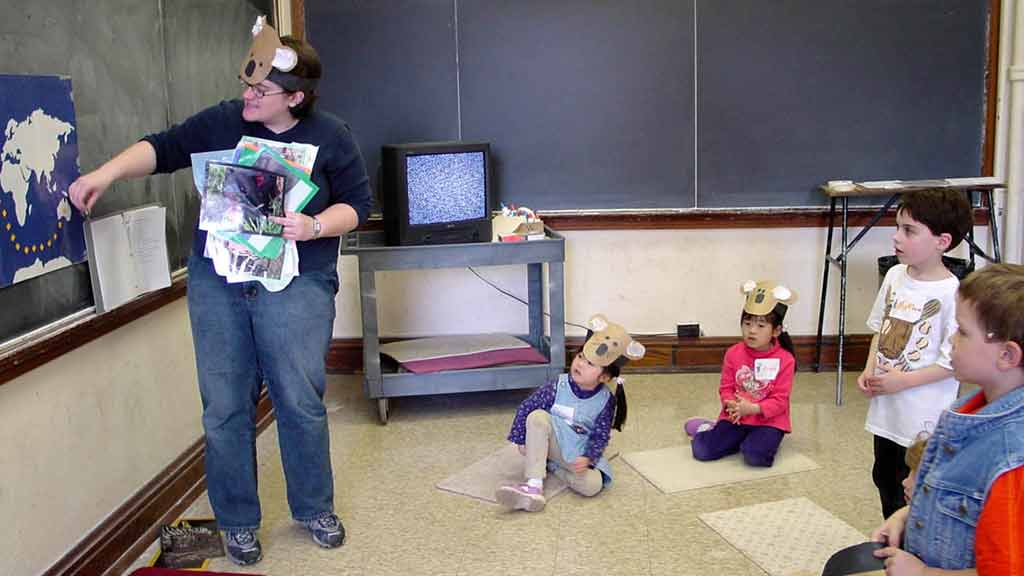
Amazing Australian Animals
- Post Date: 9/13/2002
- Reading Time: 2 minute read
Down Under
To start our exploration of Australian animals, we sailed a ship over a map of the world to show Australia's distance from other land masses. This continent has been geographically isolated for the last 40 million years, giving its species plenty of time and space to develop into the unique environments we know today.
-
 An animal version of Red Light, Green Light called Marsupials on the Move teaches participants the many different ways marsupials can get around. Kangaroos make big leaps, wallabies take smaller hops, and wombats lumber on all four feet, but everyone stops to take a bite when they hear "Food!"
An animal version of Red Light, Green Light called Marsupials on the Move teaches participants the many different ways marsupials can get around. Kangaroos make big leaps, wallabies take smaller hops, and wombats lumber on all four feet, but everyone stops to take a bite when they hear "Food!" -
 Through images, actions, discussions, and games, kindergarten and first grade students discovered some of the amazing and unique animals from Australia.
Through images, actions, discussions, and games, kindergarten and first grade students discovered some of the amazing and unique animals from Australia.
Animals with Pockets
From koalas to kangaroos, Australia's best-known animals are marsupials, mammals who feed their young in a pouch. Each species of marsupials has special adaptations to help it take advantage of different food sources and habitats. Other marsupials include wombats, opossums, bandicoots, and quokkas.
Fantastic Feathers
We discussed our feathered friends and listened to their calls: kookaburras, emus, lyrebirds, and fairy penguins.
Fierce Creatures
Predators range from the hunting dingo and scavenging Tasmanian devil to powerful crocodiles and deadly snakes.
In the Sea
No trip to Australia is complete without a look at the Great Barrier Reef, where millions of animals—big and small, floating and fixed—live in a diverse, interconnected underwater ecosystem.
Mammals That Lay Eggs?
Monotremes are the only kind of mammals that lay eggs. There are only four species of monotremes in the whole world, and Australia has two of them. Most of us have seen pictures of a platypus gliding through the water, but what about the spiny short-beaked echidna? These closely-related animals have very different ways of living: one uses its strong muscles and webbed feet to swim through rivers to eat crustaceans, while the other uses its long, sticky tongue to catch insects and has spines for camouflage and defense.
-
- Share:
- Subscribe to Newletter
- Giving

